In Principio… la parola si fece carne

Monika Bravo, particolare dell’installazione ARCHE-TYPES. The sound of the word is beyond sense, 2015, foto Monika Bravo © Monika Bravo, Courtesy artista
Dal 9 May 2015 al 22 November 2015
Venezia
Luogo: Biennale Arsenale Sale d'Armi / Pad. Santa Sede
Indirizzo: Calle della Tana 2169/S
Curatori: Micol Forti
La Santa Sede partecipa quest’anno per la seconda volta alla Biennale d’Arte di Venezia, con un Padiglione ispirato al Nuovo Testamento. In Principio… la parola si fece carne è il tema scelto dal Commissario, il Card. Gianfranco Ravasi, Presidente del Pontificio Consiglio della Cultura, che ha voluto venisse sviluppato il tema del “Principio”, passando dal riferimento alla Genesi dell’edizione del 2013 a quello del Prologo del Vangelo di Giovanni.
I due poli essenziali intorno a cui si articola la struttura del Padiglione, curato da Micol Forti, sono: innanzitutto la Parola trascendente, che è “in principio” e che rivela la natura dialogica e comunicativa del Dio di Gesù Cristo (vv. 1-5); ad essa si unisce la Parola che si fa “carne”, corpo, per portare la presenza di Dio nell’umanità, soprattutto là dove questa appare ferita e sofferente (v. 14). Con il loro “incrociarsi” la dimensione “verticale-trascendente” e quella “orizzontaleimmanente” costituiscono il cuore della ricerca.
Le due “tavole” del Prologo giovanneo sono dunque il fulcro della riflessione dalla quale prendono vita le opere dei tre artisti, individuati dopo una lunga selezione, secondo alcuni precisi criteri: la consonanza del rispettivo percorso col tema prescelto, la varietà delle tecniche artistiche, l’internazionalità e la diversità di provenienza geografica/culturale, e soprattutto il carattere ancora aperto e in evoluzione della loro ricerca.
Monika Bravo (1964), nata e cresciuta in Colombia, oggi vive e lavora a New York; la macedone Elpida Hadzi-Vasileva (1971), attualmente vive e lavora a Londra; il fotografo Mário Macilau (1984), nato e cresciuto a Maputo, in Mozambico, dove abita.
Il catalogo del Padiglione, a cura di Micol Forti e Elisabetta Cristallini (italiano-inglese - Gangemi Editore), oltre al saggio introduttivo di Gianfranco Ravasi, centrato sul tema del Padiglione, conterrà testi di Micol Forti, Elisabetta Cristallini, Ben Quash, Octavio Zaya e Alessandra Mauro, schede e apparati. Criteri di sobrietà ed economicità hanno guidato la progettazione e l’allestimento del Padiglione, curato dall’arch. Roberto Pulitani: i costi sono stati totalmente sostenuti dagli Sponsor, che a vario titolo hanno reso possibile questo importante progetto.
Vedi anche:
Cartoline dalla Biennale
I due poli essenziali intorno a cui si articola la struttura del Padiglione, curato da Micol Forti, sono: innanzitutto la Parola trascendente, che è “in principio” e che rivela la natura dialogica e comunicativa del Dio di Gesù Cristo (vv. 1-5); ad essa si unisce la Parola che si fa “carne”, corpo, per portare la presenza di Dio nell’umanità, soprattutto là dove questa appare ferita e sofferente (v. 14). Con il loro “incrociarsi” la dimensione “verticale-trascendente” e quella “orizzontaleimmanente” costituiscono il cuore della ricerca.
Le due “tavole” del Prologo giovanneo sono dunque il fulcro della riflessione dalla quale prendono vita le opere dei tre artisti, individuati dopo una lunga selezione, secondo alcuni precisi criteri: la consonanza del rispettivo percorso col tema prescelto, la varietà delle tecniche artistiche, l’internazionalità e la diversità di provenienza geografica/culturale, e soprattutto il carattere ancora aperto e in evoluzione della loro ricerca.
Monika Bravo (1964), nata e cresciuta in Colombia, oggi vive e lavora a New York; la macedone Elpida Hadzi-Vasileva (1971), attualmente vive e lavora a Londra; il fotografo Mário Macilau (1984), nato e cresciuto a Maputo, in Mozambico, dove abita.
Il catalogo del Padiglione, a cura di Micol Forti e Elisabetta Cristallini (italiano-inglese - Gangemi Editore), oltre al saggio introduttivo di Gianfranco Ravasi, centrato sul tema del Padiglione, conterrà testi di Micol Forti, Elisabetta Cristallini, Ben Quash, Octavio Zaya e Alessandra Mauro, schede e apparati. Criteri di sobrietà ed economicità hanno guidato la progettazione e l’allestimento del Padiglione, curato dall’arch. Roberto Pulitani: i costi sono stati totalmente sostenuti dagli Sponsor, che a vario titolo hanno reso possibile questo importante progetto.
Vedi anche:
Cartoline dalla Biennale
SCARICA IL COMUNICATO IN PDF
COMMENTI

-
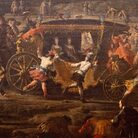 Dal 20 December 2025 al 20 April 2026
Caserta | Reggia di Caserta
Dal 20 December 2025 al 20 April 2026
Caserta | Reggia di Caserta
Regine: trame di cultura e diplomazia tra Napoli e l’Europa
-
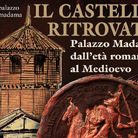 Dal 19 December 2025 al 23 March 2026
Torino | Palazzo Madama - Museo Civico d’Arte Antica
Dal 19 December 2025 al 23 March 2026
Torino | Palazzo Madama - Museo Civico d’Arte Antica
Il castello ritrovato. Palazzo Madama dall’età romana al medioevo
-
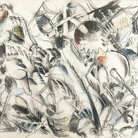 Dal 17 December 2025 al 19 January 2026
Roma | Palazzo della Cancelleria
Dal 17 December 2025 al 19 January 2026
Roma | Palazzo della Cancelleria
De Humana Mensura di Linda Karshan
-
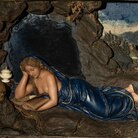 Dal 18 December 2025 al 12 April 2026
Firenze | Gallerie degli Uffizi
Dal 18 December 2025 al 12 April 2026
Firenze | Gallerie degli Uffizi
Cera una volta. Sculture dalle collezioni medicee
-
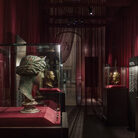 Dal 11 December 2025 al 9 April 2026
Firenze | Museo Archeologico Nazionale di Firenze
Dal 11 December 2025 al 9 April 2026
Firenze | Museo Archeologico Nazionale di Firenze
Icone di Potere e Bellezza
-
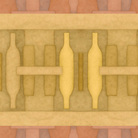 Dal 11 December 2025 al 11 January 2026
Roma | Palazzo Esposizioni Roma
Dal 11 December 2025 al 11 January 2026
Roma | Palazzo Esposizioni Roma
Giorgio Morandi nella Collezione Eni. Un viaggio attraverso la storia culturale del cane a sei zampe e l’eredità di Enrico Mattei


